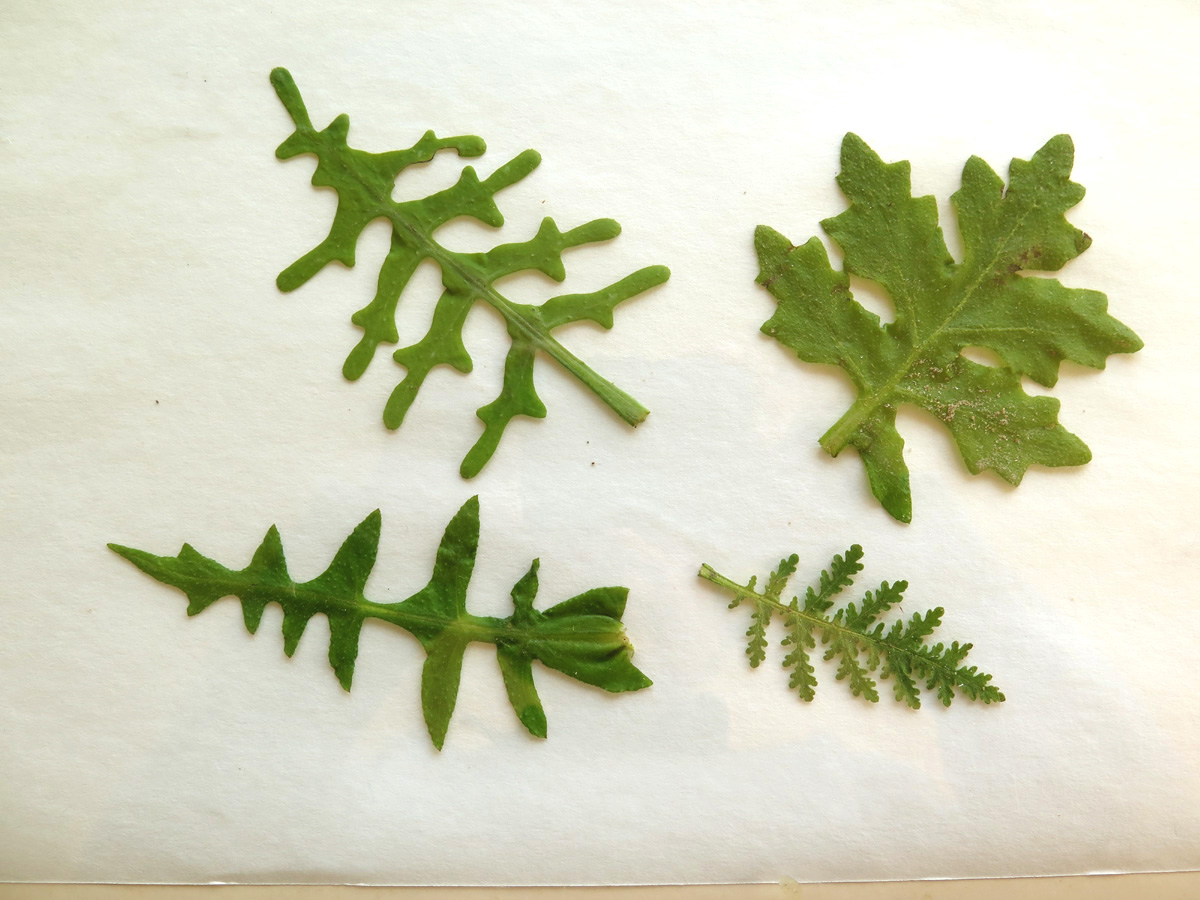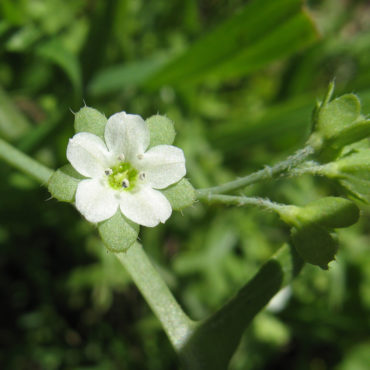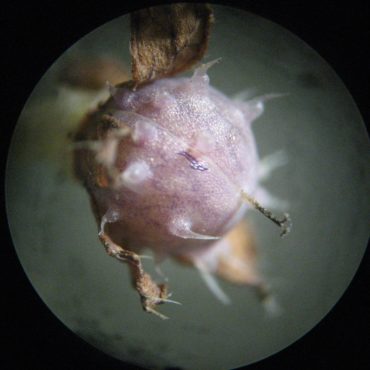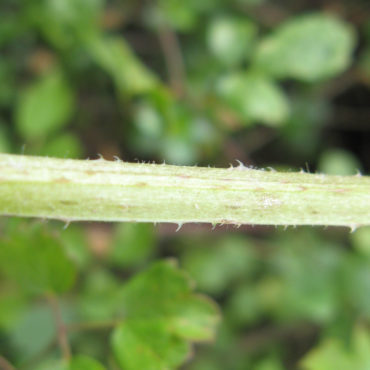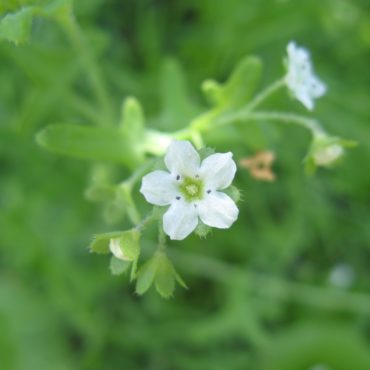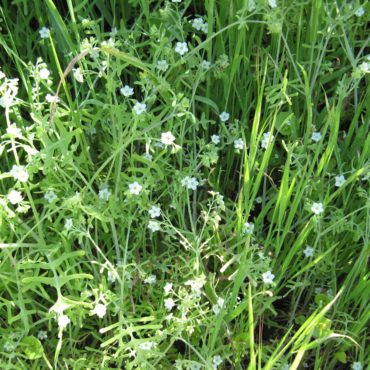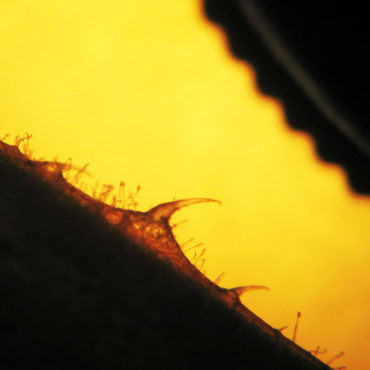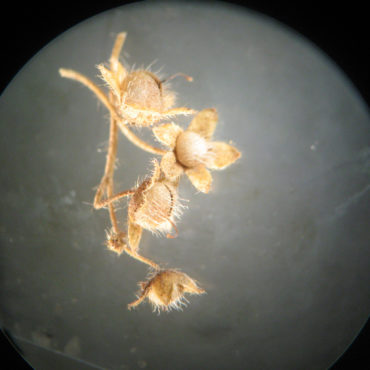There are three spring blooming low-mounding plants in shady or moist areas with very small, white flowers: San Diego fiesta flower (Pholistoma membranaceum), white fiesta flower (Pholistoma racemosum) and common eucrypta (Eucrypta chrysanthemifolia). These are superficially similar and easily confused. In addition, unless showy its blue-purple flowers are present, a third fiesta flower (Pholistoma auritum) is similar to San Diego fiesta flower. Complicating things is the fact that San Diego fiesta flower and white fiesta flower share both common names while the more showy plant is usually called just fiesta flower.
The easiest way to distinguish these is by means of their leaves. The San Diego fiesta flower (upper left) and fiesta flower (lower left) have leaves that are deeply, pinnately lobed into narrow segments. The petiole of the purple-flowering fiesta flower has a broad wing; that of the San Diego fiesta flower is much narrower, if noticeable at all.
In contrast, the leaf of the white fiesta flower (upper right) is pinnately divided into much broader lobes, which may, in turn, have a few secondary lobes or large scallops. All Pholistoma species are weak, vining herbs that have downward-pointing hairs that help them grab onto surrounding surfaces and often feel like Velcro©.
The final plant, common eucrypta (lower right) is a small sub-shrub. Its leaves are more finely divided; the primary lobes have secondary lobes and even tertiary lobes or scallops. Common eucrypta lacks the hairs that give the others their grabby feeling.

